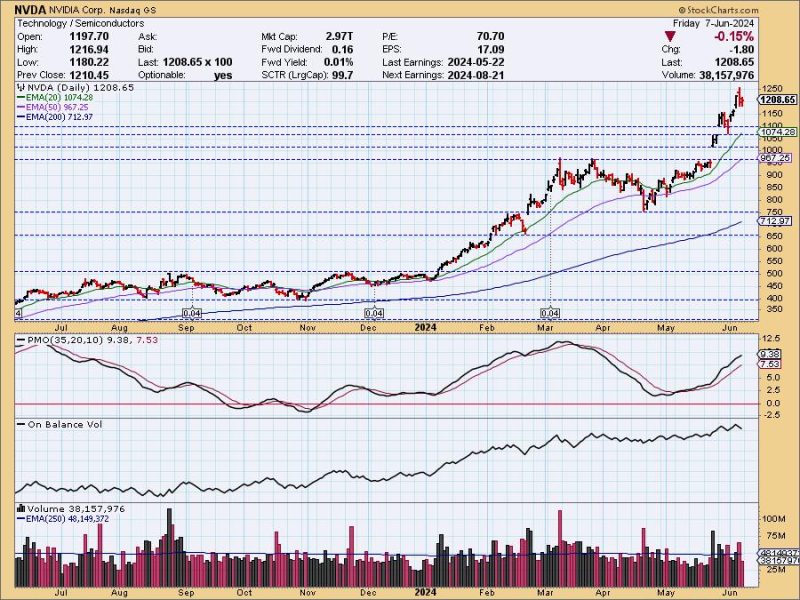Nvidia’s Stock Split and Potential Correction
Nvidia Corporation, a leading American multinational technology company, recently announced a 4-for-1 stock split, causing a surge in investor interest and speculation regarding the potential implications of this move on the company’s valuation and stock price. Stock splits are often used by companies to make their shares more affordable and increase liquidity in the market. However, it is essential to delve deeper into the dynamics surrounding Nvidia’s decision to split its stock and analyze the potential for a correction in its share price in the near future.
The stock split announcement by Nvidia came at a time when the company’s shares had been on an impressive upward trajectory, driven by strong financial performance, technological advancements, and growing demand for its products in various sectors such as gaming, data centers, and artificial intelligence. Nvidia’s stock price had surged significantly in the past year, making it one of the top performers in the tech industry.
Stock splits are generally viewed positively by investors as they suggest confidence in the company’s future growth prospects and can attract more retail investors who may find the shares more accessible at a lower price point. In the case of Nvidia, the decision to split its stock indicates a desire to make its shares more accessible and potentially capitalize on the positive momentum surrounding the company.
However, the announcement of a stock split can also lead to a short-term surge in the stock price as investors rush to buy shares before the split takes effect. This increase in demand can create a temporary imbalance in the supply and demand dynamics, leading to a potential correction in the stock price once the split is completed.
Moreover, stock splits do not fundamentally change the underlying value of a company. While a lower share price may make the stock more appealing to a broader base of investors, it does not alter the company’s financial position or future growth potential. As such, investors should be cautious not to get carried away by the euphoria surrounding a stock split and carefully evaluate the company’s fundamentals and long-term prospects.
In the case of Nvidia, the company’s strong performance and leading position in the semiconductor industry are likely to continue driving growth and shareholder value in the future. However, investors should be prepared for potential volatility in the stock price following the split, as market forces adjust to the new share structure.
In conclusion, Nvidia’s decision to split its stock reflects confidence in the company’s growth prospects and a desire to attract a broader base of investors. While stock splits can generate excitement and short-term price gains, investors should remain vigilant and focus on the company’s underlying fundamentals to make informed decisions about their investments. Ultimately, the success of Nvidia’s stock split will depend on the company’s ability to deliver on its promises and sustain its strong performance in the competitive tech landscape.
